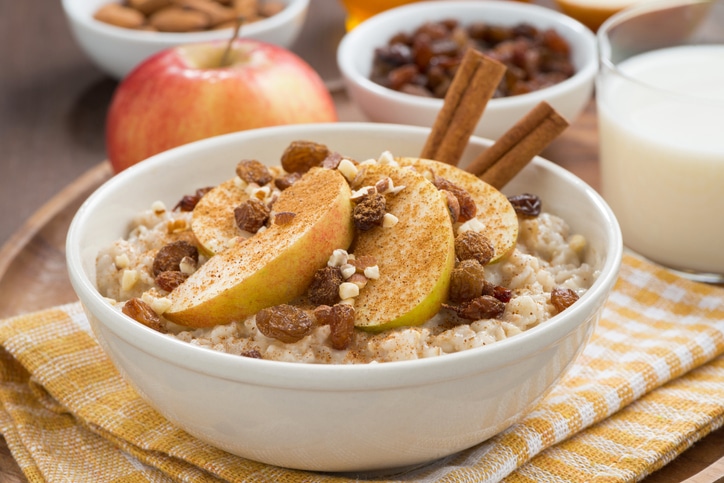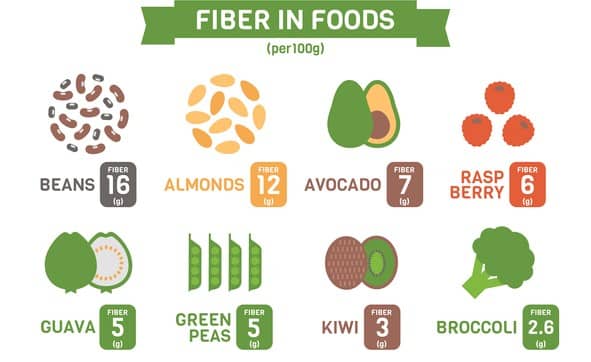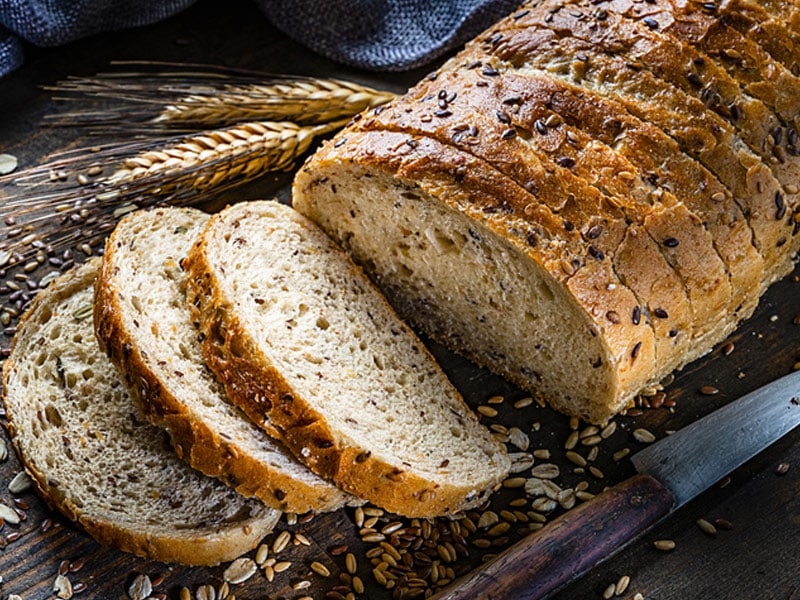Most of us know we need fiber to maintain good digestive health. But did you know it can also help prevent chronic conditions such as type 2 diabetes, colorectal cancer, heart disease, and high cholesterol?
In order to reap the benefits fiber has to offer, we must consume the right amount of the complex carbohydrate.
“Most Americans come up seriously short on how much fiber they consume daily,” says Abby Read, MS, RDN, LD, a wellness coach and program coordinator at Methodist Dallas and Methodist Charlton Medical Centers. “Men should aim to consume between 30 and 38 grams per day, and women should try to eat between 21 and 25 grams.”
While we get little benefit from the nutrients within fiber, it’s crucial in keeping our digestion on track.
“Fiber is a complex carbohydrate that our bodies can’t digest,” Read says. “Instead of getting broken down, it passes whole through our stomachs, colon, and small intestines and then out from our bodies.”
Anytime you eat fiber — preferably in the form of fruits and vegetables rather than supplements and powders — it causes your stool to be heavier, larger, and softer, which promotes regularity.
It also helps normalize glucose and cholesterol levels, so it can play a vital role in managing and preventing chronic conditions. Researchers found that for every 8-gram increase in dietary fiber consumed each day, the risk of early death, colon cancer, heart disease, and type 2 diabetes dropped by 5% to 27%.
Since fiber has such an impact on our health, here are five easy ways to eat more of it:

1. MAKE YOUR FIRST MEAL COUNT
Oatmeal is a yummy classic that has 5 grams of fiber per cup. Pair it with apple slices to give your meal an extra boost. If it’s still too bland after that, add brown sugar, cinnamon, nuts, or all of the above to make it tastier.
Cold cereal can also be a good option if oats don’t float your boat. Some bran cereals contain 5 grams of fiber per serving. If you’re in a hurry, skip the milk, and eat it dry on your way to work.

2. SWITCH TO WHOLE GRAINS
Consider replacing the white noodles in your next plate of spaghetti or linguine with a whole-wheat version. Whole-grain pasta, breads, cereals, rice, pastas, and tortillas have more fiber — as well as vitamins and other nutrients — than their refined or enriched (e.g. “white”) versions. Keep that in mind the next time you’re at the grocery store.

3. BEANS, BEANS, THE MAGICAL FIBER
Beans are a powerful source of fiber. Eat just 1 cup of cooked beans and you will have already consumed most of your daily goal. Pasta made from chickpeas (aka garbanzo beans) makes for a high-fiber alternative.
Whether it’s pinto beans, lentils, or red beans, you can’t go wrong — so long as you watch your portion size. Eating too much can cause bloating, constipation, and gas.

4. HOW ‘BOUT THEM APPLES?
Fruits are another good addition to a high-fiber diet, whether it’s apples as a snack, a side of cantaloupe, or a nutritious dessert of berries. A cup of strawberries has 3 grams of fiber, and the same goes for a whole banana.
Adding a side of vegetables to every meal is an easy opportunity to add fiber to your plate. For example, a cup of cooked Brussels sprouts has 4 grams, bringing you closer to that daily goal.

5. SNACKS THAT FILL YOU UP
Low-fat popcorn and peanuts are satisfying snacks that can help keep the hunger pangs away. Two cups of popped popcorn comes with 3 grams of fiber. But go easy on the butter and salt, or your healthy snack can quickly pack on the calories and raise your blood pressure.
Peanuts are another guilt-free snack option that has a substantial amount of fiber. Just half a cup of peanuts comes with around 8 grams.
Being more conscious about your intake won’t just lower your risks for chronic disease and make your tummy happier. It could also help keep your waistline under control by reducing your appetite.
“A fiber-rich diet will not only keep you regular, and help keep diseases away, it will also help you maintain a healthy weight,” Read says. “Fiber-rich foods are often lower in calories, carbohydrate or high fat-food sources.”

